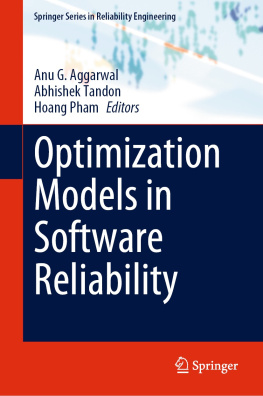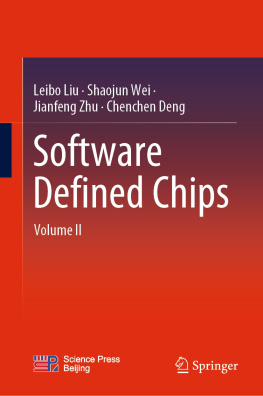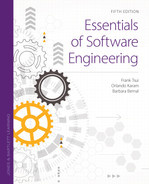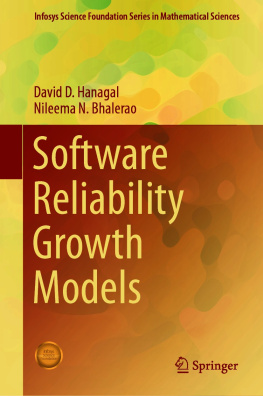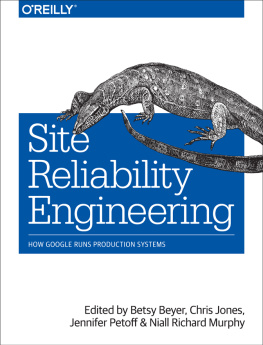Editors
Anu G. Aggarwal
Department of Operational Research, University of Delhi, New Dehli, India
Abhishek Tandon
Shaheed Sukhdev College of Business Studies, University of Delhi, New Delhi, India
Hoang Pham
Department of Industrial and Systems Engineering, State University of New Jersey, Piscataway, NJ, USA
ISSN 1614-7839 e-ISSN 2196-999X
Springer Series in Reliability Engineering
ISBN 978-3-030-78918-3 e-ISBN 978-3-030-78919-0
https://doi.org/10.1007/978-3-030-78919-0
Springer Nature Switzerland AG 2022
This work is subject to copyright. All rights are reserved by the Publisher, whether the whole or part of the material is concerned, specifically the rights of translation, reprinting, reuse of illustrations, recitation, broadcasting, reproduction on microfilms or in any other physical way, and transmission or information storage and retrieval, electronic adaptation, computer software, or by similar or dissimilar methodology now known or hereafter developed.
The use of general descriptive names, registered names, trademarks, service marks, etc. in this publication does not imply, even in the absence of a specific statement, that such names are exempt from the relevant protective laws and regulations and therefore free for general use.
The publisher, the authors and the editors are safe to assume that the advice and information in this book are believed to be true and accurate at the date of publication. Neither the publisher nor the authors or the editors give a warranty, expressed or implied, with respect to the material contained herein or for any errors or omissions that may have been made. The publisher remains neutral with regard to jurisdictional claims in published maps and institutional affiliations.
This Springer imprint is published by the registered company Springer Nature Switzerland AG
The registered company address is: Gewerbestrasse 11, 6330 Cham, Switzerland
Preface
In this age of Internet technology, software has become an indispensable part of our everyday life. With the paradigm shift of businesses, education, defence, healthcare, etc. from physical to digital platforms, our reliance on software has grown in leaps and bounds. Development of highly reliable software at reasonable prices with quick deliveries has emerged as the prime objective of IT firms. Optimization techniques/tools have gained popularity among IT managers and software developers for decision-making while meeting multiple needs of the users. Optimization is a set of mathematical techniques where the constraints affecting the decisions are identified and included in the model while maximizing gains or minimizing costs and risks. The use of optimization techniques for the judicious allocation of resources and strategic decisions pertaining to software release schedules, software versions management, and warranty/maintenance policies is a relatively new field of study. The main focus of this book is the evaluation and optimization of key decisions related to the software development process. This book consists of 16 chapters featuring a broad range of topics including Software Reliability Modeling, Estimation and Prediction, Optimal Allocation and Selection Decisions, and up-gradations problems. Each chapter is written by well-known researchers and IT practitioners to present the recent trends and research opportunities in the area of software reliability engineering. More specifically,
Chapter discusses robust multi-response-based software reliability modeling and also illustrates the methodology on a large-scale communication software system. The two responses under study are time-between-detection of defects and effort. Optimization using response surface methodology is performed on overall desirability value.
Chapter deals with optimal release time problem for a modular software system considering the relative importance of the modules. To obtain the modular weights, Fuzzy Analytical Hierarchy Process (FAHP) is used.
The planning and implementation of software development processes go hand in hand with the user's expectations. Chapter describes a resource allocation problem with the objective of maximization of removal of fault content from a modular software. The allocation problem takes into account the different levels of severity of faults and module-wise cost is considered to be dependent on its severity level.
Chapter , characterization based on record values for exponentiated generalized family of distributions is provided. Two measures of reliability are considered. Point as well as interval estimates for unknown parameter(s) of reliability based on records are discussed. A number of parameter estimation methods are compared through simulation.
Chapter consists of weighted distance-based approach to rank the multi-release SRGMs using the Maximum Deviation Method (MDM) and Distance-Based approach (DBA). The models are ranked based on selection criteria having different priority weights and composite distance values.
This book will be an important resource of information for the postgraduate students, researchers, academicians, and software industry experts. Using optimization modeling, IT consultants, SRE research community, and system analysts can definitely make efficient software performance assessment and related strategic decisions related to software project budget utilization, delivery planning, software versioning to name a few.
We acknowledge Springer for this opportunity and professional support. Importantly, we would like to thank all the chapter authors and reviewers for their time and efforts for this work.
Anu G. Aggarwal
Abhishek Tandon
Hoang Pham
New Dehli, India New Dehli, India Piscataway, USA
April 2021
Contents
Mengmeng Zhu and Hoang Pham
Shinji Inoue , Abhishek Tandon and Prarna Mehta
Anusha Pai , Gopalkrishna Joshi and Suraj Rane
Shinji Inoue , Yuka Minamino and Shigeru Yamada
Neha , Gurjeet Kaur and Vinita Jindal
Vibha Verma , Anu G. Aggarwal and Hoang Pham
Nidhi Nijhawan and Vikas Dhaka
Neha , Anu G. Aggarwal and Ajay Jaiswal
Vibha Verma , Sameer Anand and Anu G. Aggarwal
Rubina Mittal and Rajat Arora
Gurjeet Kaur
Prarna Mehta , Abhishek Tandon and Himanshu Sharma
Taruna Kumari and Anupam Pathak
Sameer Anand , Ritu Bibyan and Aakash
Deepak Kumar and Saru Dhir
Ritu Bibyan and Sameer Anand

